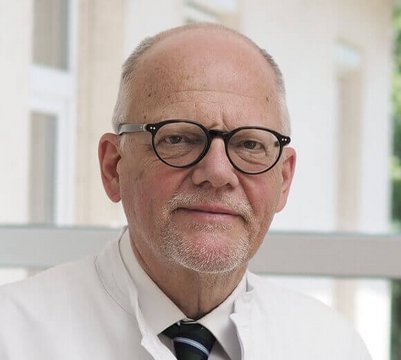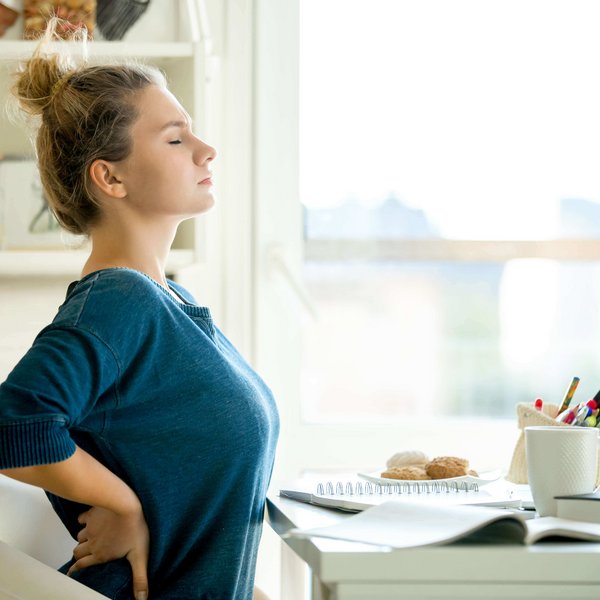Almost every adult knows back pain. Sometimes, the diagnosis is clear. The cause is a condition, such as an intervertebral disk prolapse, or a back injury from exercise, or you attempted too much when moving house and were hurt when lifting excessive loads. In most cases, however, the cause of low back pain cannot easily be determined. Experts then refer to the condition as “non-specific back pain”.
Back pain without a diagnosis?
In cases of non-specific back pain, there are no obvious conditions or injuries to physical structures. This means that a physician cannot provide you with a definitive diagnosis – which may leave you wondering what’s going on.
But you’re not alone, quite the opposite: more than 80 percent of patients with back pain suffer from general, non-specific pain. And it is so widespread that back pain is known as one of the most common conditions.
Sometimes, the pain is so severe that those affected can temporarily not work. According to a report published by the German health insurance provider Techniker Krankenkasse, around one in ten sick days can be attributed to conditions of the spine and back. It’s therefore all the more important that you address your problems and find out how to get your back fit again.
Speak to your physician!
Do you have back pain but you’re not sure what caused it? Ask your physician to give you a thorough examination! The physician will be able to tell you whether your problems are non-specific pain or whether the structures in your back are injured. So you can prepare effectively for your appointment and don’t forget any relevant information, we’ve compiled a checklist for you.
When back pain keeps recurring frequently
Even if low back pain is debilitating during the acute phase, it usually seems to subside by itself. This may initially be a relief but it also lulls you into a false sense of security. The majority of non-specific back pain occurs in episodes. That means pain completely disappears to begin with, only to recur after a few months. 84 percent of patients mention recurring pain within twelve months. The intervals until the back pain returns can become shorter and shorter, and the periods of pain increasingly longer. If they exceed three months, this is referred to as chronic back pain.

Back pain frequently recurs, even if it subsides completely for extended periods. Consistent treatment – even during the times patients don’t feel pain – give back health a long-term perspective.
Prof. Dr. Hans-Raimund Casser,
Medical Director at DRK Pain Center in Mainz, Germany
But don’t get discouraged by this! In order to help yourself and your back, it’s important to understand which factors contribute to back pain. In the next step, you can discuss relevant measures with a physician and take action.

There’s a lot you can do for your back, in consultation with the treating physician. In cases of back pain, comprehensive treatment that combines several established measures promises most success: Bauerfeind’s back therapy, for example, focuses on multimodal back pain treatment. Find out more about the individual elements and stand up for your back!
View Bauerfeind’s back therapy
One pain – many causes
Anyone can basically suffer from back pain. However, certain professions are at a higher risk, especially those subjected to significant physical strain, such as construction and metal workers, warehouse operatives, hairdressers, and guest relation managers. Tension, excessive strain, and incorrect posture can develop quickly when carrying heavy loads or an unfavorable body posture is adopted.

The pursuit of hobbies can also cause back pain: motor sports and horse-back riding, for example, subject the back to a lot of strain. This also applies to rowing. And those who aren’t careful during gardening or DIY can also cause harm to their backs.
It’s not just serious or one-sided strain that can trigger pain. If the back muscles are weak, they can’t keep the body upright properly. Those who sit or stand a lot at work, in particular, will adopt an unfavorable posture during everyday life – which, in turn, leads to tension and pain.
Back pain – it’s not just about the body
When you discuss your back pain with your physician, you will most certainly also be asked about your current life situation. And not without reason: whether you’re content and relaxed in everyday life, or whether you often feel stressed, or there are other circumstances that cause you to worry can also have an impact on your physical health.

It’s quite common that the causes of back pain are – at least a partly – based on stress and imbalance. You should therefore not only take a look at your habits but also listen within yourself to find out whether something is troubling you or private or professional difficulties subject you to additional strain.
Actively combating back problems
Low back pain can have many varying causes. The measures you take to address them should therefore also vary. Pain medication can be helpful in cases of acute and severe back pain but it’s not a long-term solution. Ideally, you should incorporate a combination of measures in your everyday life to successfully combat pain in the long term. This includes promoting activity, relieving tension, strengthening muscles, reducing stress, ensuring relaxation, and developing mental resistance.
Does that sound complicated and laborious? It doesn’t have to be. Our back program provides you with a combination of established measures that will support you on your journey toward a permanently healthy back – together with your physician, you can easily integrate them into your everyday life.
Providing support, promoting activity

Depending on the severity of your pain, its location, and during which activities it restricts you most, additional medical products can be helpful. Supports and orthoses stabilize your back, promote a healthy posture, and help you stay active. Find out here what’s special about our back supports and orthoses, how they work, and how they can alleviate your problems:
Discover back support and orthoses

84% of those using back supports/orthoses suffer from less pain, thanks to their medical product.*
*Results from the representative survey conducted by the Allensbach Institute for Public Opinion Research on behalf of eurocom e.V.: Link
Start your training with Bauerfeind’s back therapy

Stand up for your back: when you use the free Bauerfeind Training App*, you will receive a personalized training program, developed by health experts and individually tailored to your symptoms and the training with your support or orthosis. In addition to a comprehensive selection of exercises, you will also receive useful tips on keeping your back healthy. Make your back therapy complete – get the app and start your individual training program.
*If you’re already being treated, please consult the staff helping with your therapy on the use of our Training App.
This online advice gives an initial insight into this area of expertise, and suggests selected medical diagnosis and treatment options. Even though the details are scientifically substantiated, we do not claim that all information is complete or that all schools of thought are represented. All contents, in particular those about diagnostics and treatment options (texts, images, graphs, etc.), are understood as non-binding support for the treatment that must be chosen by a physician or specialist. This online advice is no substitute for the necessary personal medical history and its overall assessment by a physician / a professionally trained and qualified specialist, considering ongoing treatment, if applicable.
Das könnte dich auch interessieren





